
HMAS Sydney was a Chatham-class light cruiser of the Royal Australian Navy (RAN). Laid down in 1911 and launched in 1912, the cruiser was commissioned into the RAN in 1913.

The Battle of Cocos was a single-ship action that occurred on 9 November 1914, after the Australian light cruiser HMAS Sydney, under the command of John Glossop, responded to an attack on a communications station at Direction Island by the German light cruiser SMS Emden, commanded by Karl von Müller.

John F. Gavin was a pioneer Australian film actor and director, one of the early filmmakers of the 1910s. He is best known for making films about bushrangers such as Captain Thunderbolt, Captain Moonlite, Ben Hall and Frank Gardiner. Known informally as 'Jack', Gavin worked in collaboration with his wife Agnes, who scripted many of his films.

The Hero of the Dardanelles is a 1915 Australian film directed by Alfred Rolfe, made as a patriotic war recruiting film.
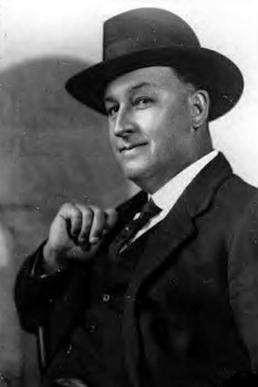
Raymond Longford was a prolific Australian film director, writer, producer, and actor during the silent era. Longford was a major director of the silent film era of the Australian cinema. He formed a production team with Lottie Lyell. His contributions to Australian cinema with his ongoing collaborations with Lyell, including The Sentimental Bloke (1919) and The Blue Mountains Mystery (1921), prompted the Australian Film Institute's AFI Raymond Longford Award, inaugurated in 1968, to be named in his honour.
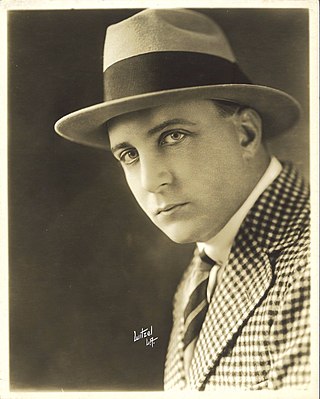
Arthur Shirley was an Australian actor, writer, producer, and director of theatre and film. He experienced some success as a film actor in Hollywood between 1914 and 1920.
The Exploits of the Emden is a 1928 silent Australian film about the Battle of Cocos; the World War I naval battle between Australian cruiser HMAS Sydney and German cruiser SMS Emden. It consists of footage from a 1926 German film, Our Emden, with additional sequences shot in Australia by director Ken G. Hall. Only part of the film survives today.

Alfred Rolfe, real name Alfred Roker, was an Australian stage and film director and actor, best known for being the son-in-law of the celebrated actor-manager Alfred Dampier, with whom he appeared frequently on stage, and for his prolific output as a director during Australia's silent era, including Captain Midnight, the Bush King (1911), Captain Starlight, or Gentleman of the Road (1911) and The Hero of the Dardanelles (1915). Only one of his films as director survives today.
The Cup Winner is a 1911 Australian silent film directed by Alfred Rolfe. It is set against a backdrop of horseracing and the finale involves real footage from the 1911 Melbourne Cup.
Won on the Post is a 1912 Australian silent film directed by Alfred Rolfe set against a backdrop of horseracing.
Moira, or The Mystery of the Bush is a 1912 Australian silent film directed by Alfred Rolfe.
The Sunny South, or the Whirlwind of Fate is a 1915 Australian silent film directed by Alfred Rolfe based on the popular play The Sunny South by George Darrell. It is considered a lost film.

The Loyal Rebel is a 1915 Australian silent film directed by Alfred Rolfe set against the background of the Eureka Rebellion.
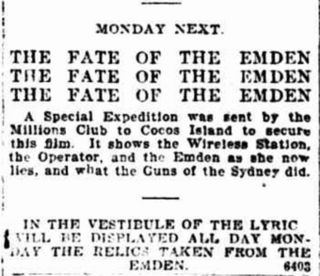
How We Fought the Emden is a 1915 Australian silent documentary film from cinematographer Charles Cusden about the Battle of Cocos during World War I, where the Australian ship Sydney sunk the Emden.
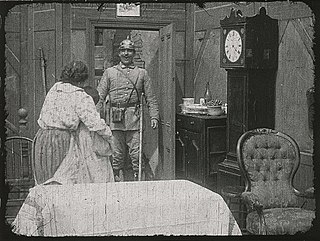
The Joan of Arc of Loos is a 1916 Australian silent film shot by Franklyn Barrett based on the true story of Émilienne Moreau-Evrard in World War I. Only a portion of the movie survives today.
For Australia is a 1915 Australian silent film directed by Monte Luke.

SMS Emden was the second and final member of the Dresden class of light cruisers built for the German Kaiserliche Marine. Named for the town of Emden, she was laid down at the Kaiserliche Werft in Danzig in 1906. The hull was launched in May 1908, and completed in July 1909. She had one sister ship, Dresden. Like the preceding Königsberg-class cruisers, Emden was armed with ten 10.5 cm (4.1 in) guns and two torpedo tubes.
Die Männer der Emden is a 2012 German war adventure film directed and co-written by Berengar Pfahl that is an account of members of the crew of SMS Emden making their way back to Germany after the Battle of Cocos (1914). The film was shot in Greece, Sri Lanka, Tunisia, Malta and Germany and appeared as both a miniseries and a feature film.
A Man – That's All (1916) is an Australian war film directed by Alfred Rolfe for Australasian Films.
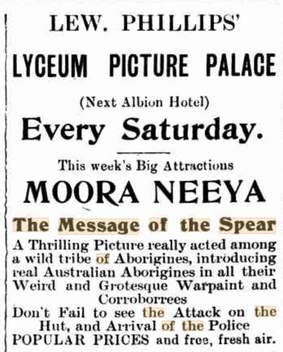
Moora Neeya, or the Message of the Spear is a 1911 Australian silent film which was the first Australian movie to emphasise aboriginal people or "the first full Australian aboriginal drama yet produced."












